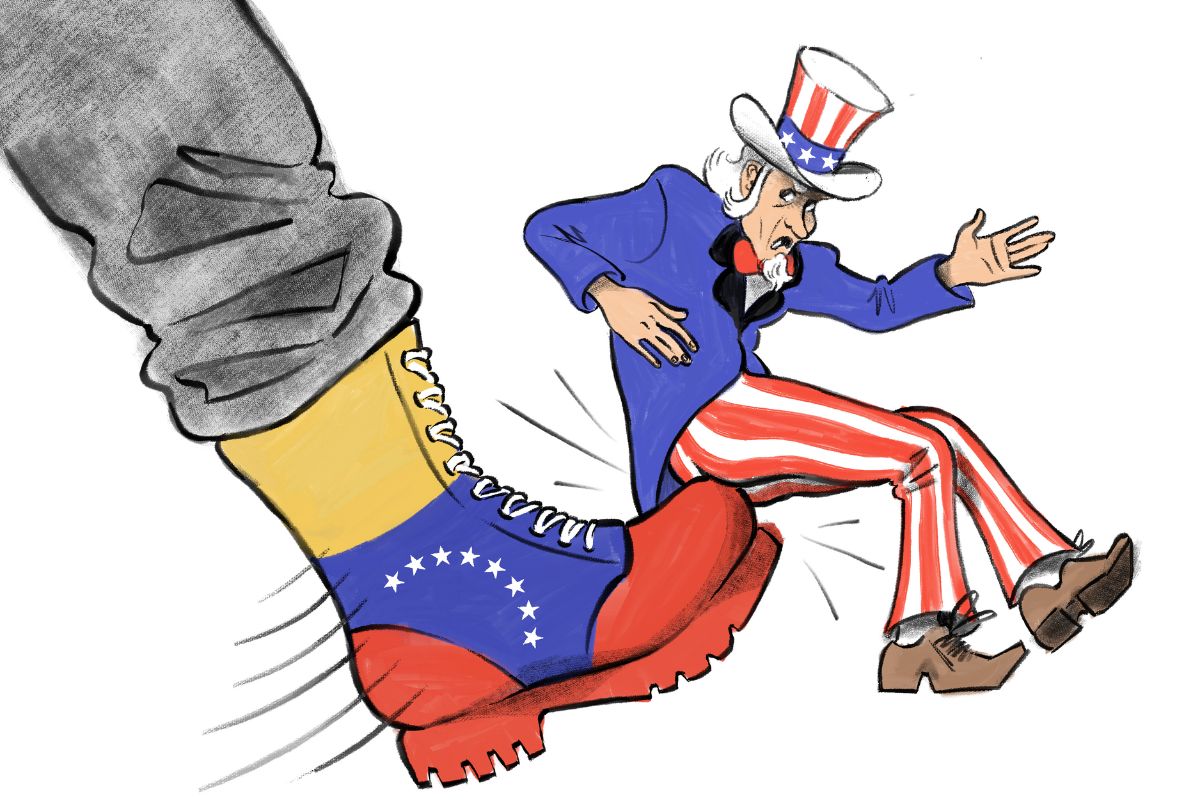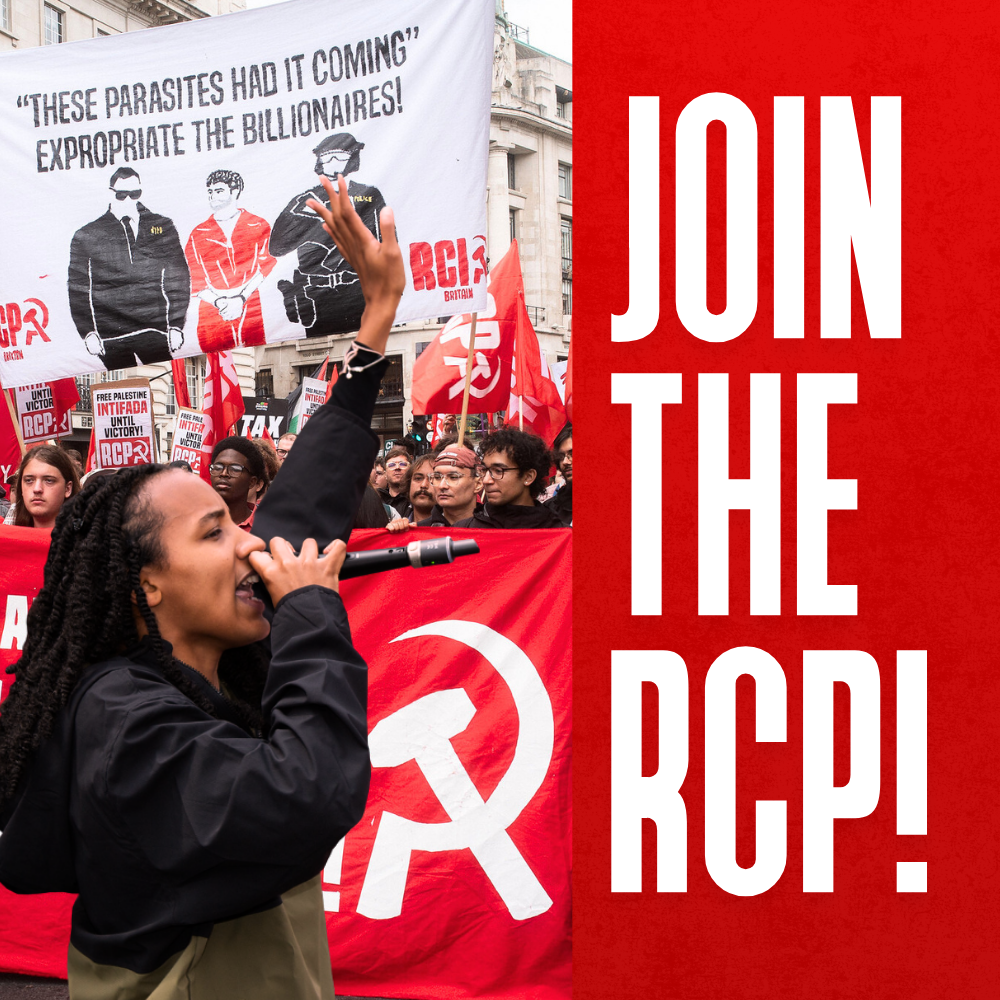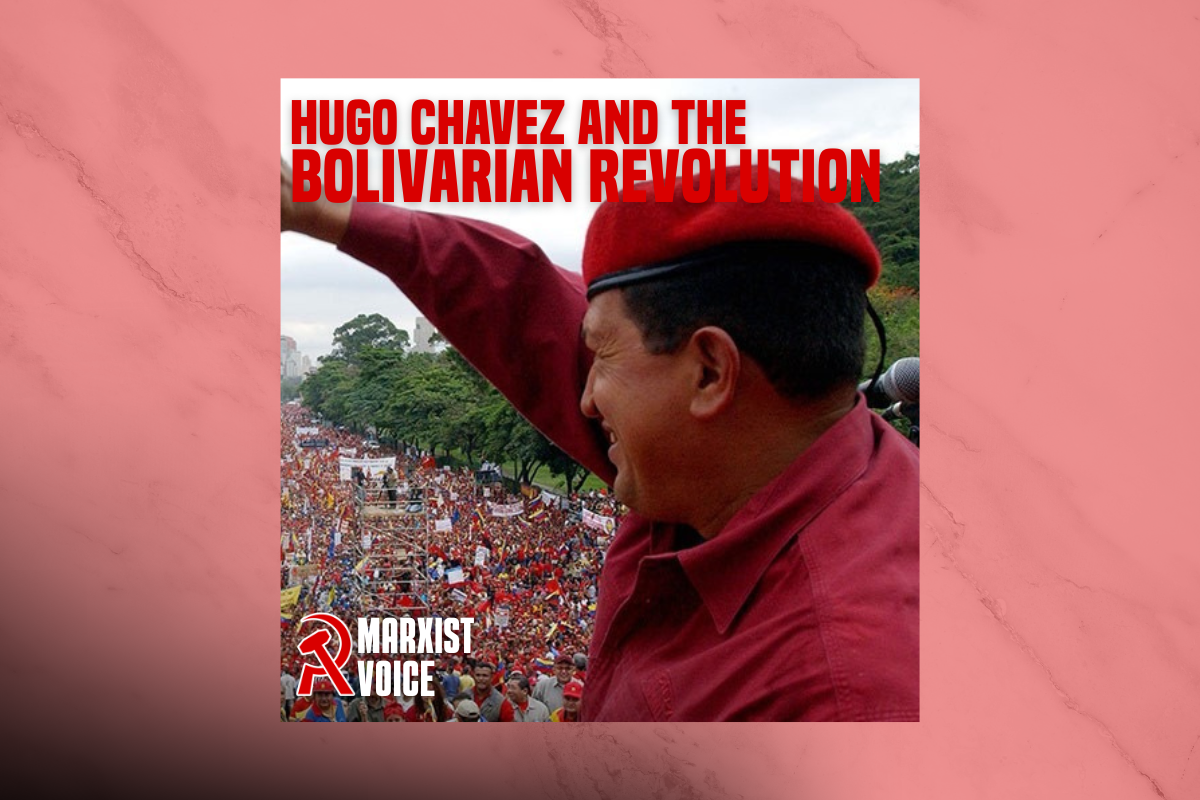The escalation of US imperialist bullying against Venezuela, which started in August, has reached fever pitch and now involves the bullying of Colombia as well.
As well as a military build-up in the Caribbean, the blowing up of speedboats, provocative bomber plane flights off the coast of Venezuela, we now see the deployment of the USS Gerald R. Ford Carrier Strike Group to the Caribbean.
What does this all mean? What is Trump trying to achieve? And how should revolutionary communists respond?
Trump’s current round of imperialist bullying against Venezuela started in late August, with an order to deploy a significant number of military assets – such as naval ships and submarines – to the Caribbean, under the justification of the ‘fight against drug cartels’. Later on, in September, more assets – this time fighter jets and other military aircraft – were deployed to Puerto Rico.
US military assets in the Caribbean now include: at least four Arleigh Burke-class destroyers (the USS Gravely, USS Jason Dunham; USS Sampson and the USS Stockdale); a 3-ship Amphibious Ready Group (amphibious assault ship USS Iwo Jima and the amphibious transport docks USS San Antonio and USS Fort Lauderdale); at least one littoral combat ship (the USS Minneapolis-Saint Paul); the guided-missile cruiser USS Lake Erie; the MV Ocean Trader (described as a ‘special ops mothership’); and the nuclear-powered fast-attack submarine, the USS Newport News.
There is also a squadron of 12 Marine Corps F-35B Lightning II stealth fighters in Puerto Rico, as well as Communications Node aircraft (such as the E-11A Battlefield Airborne), which have been seen flying from US bases in Puerto Rico and elsewhere in the region.
Last week, US military aircraft, including B-1B and B-52 bombers, conducted flyovers off the coast of Venezuela. In a provocative manoeuvre, their transponders were left on, so they could be tracked. MQ-9 Reaper drones have also been involved in the recent escalation.
On Friday 24 October, the ‘Secretary of War’ Pete Hegseth ordered the USS Gerald R. Ford Carrier Strike Group to be rerouted from Europe to the Caribbean, though at the time of publishing, it is still in the Mediterranean. The USS Gerald R. Ford is the US Navy’s newest and largest aircraft carrier class and its most advanced nuclear‑powered carrier. It leads Carrier Strike Group 12 (CSG-12) and carries a full air wing with dozens of fighter jets and helicopters. The number of fighter jets in this Strike Group alone matches the total number at the disposal of the Venezuelan air force.
As of Sunday 26 October, the USS Gravely, a guided-missile destroyer, is in Trinidad and Tobago conducting joint military exercises. This is yet another provocation against Venezuela, which is only 11 kilometres away from the Caribbean islands.
Prior to this massive deployment, the Trump administration had engaged in negotiations with Maduro via the doubly ‘special’ Special Presidential Envoy for Special Missions, Richard Grenell. On this basis, Maduro and Trump reached a number of deals back in February.
Venezuela agreed to accept deportation flights from the US (which are still ongoing), it released a number of US citizens who were in custody, the US extended oil and gas company Chevron’s operating licence in Venezuela, and there was talk of a number of possible oil and mineral deals.
Now, Grenell has been withdrawn from his Venezuelan mission, Trump has declared that a drug cartel led by Maduro himself is in power in the country, and he has increased the bounty on the Venezuelan president to $50 million. At the same time, Trump has designated a series of drug cartels as ‘terrorist organisations’, declared ‘war’ on them, and has publicly admitted to having given permission to the CIA to carry out covert operations in Venezuela.
Since 2 September, the US has struck 15 vessels (14 speedboats and one semi-submersible), killing a total of over 60 people. All of these attacks (fancily described by Trump and other US officials as “lethal kinetic strikes”) have been demonstratively publicised with videos on social media, though no information has been given about the location of the strikes, the intelligence leading to them, etc.
Fighting drug trafficking?
What is the aim of this sudden and provocative escalation? Trump has alleged that the aim is to put a stop to drug shipments to the US, which are causing tens of thousands of deaths each year. But this justification does not stand to scrutiny. US reports (from Congress, the DEA and other open and official sources) reveal that the overwhelming majority (74 percent) of cocaine trafficked into the US from South America comes via the Pacific route.
These drugs are not transported in speedboats, but rather in shipping containers and aeroplanes. Another 16 percent goes through the ‘Western Caribbean Vector’ (the Caribbean coast of Colombia). Only a mere eight percent goes through the ‘Caribbean Corridor’ (off the Venezuela coast).
Furthermore, Venezuela plays no role in the production of cocaine, which takes place mainly in Colombia, Ecuador, Peru and Bolivia.
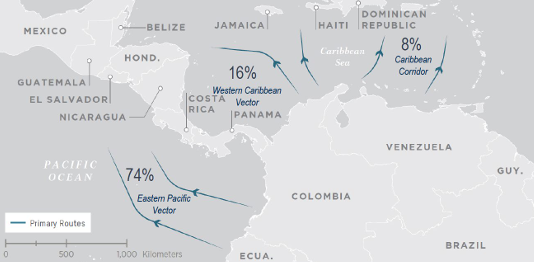
Trump has attempted to portray Venezuela as a main route for fentanyl coming from China into the US, but there is no actual evidence for that. Fentanyl comes into the US via Mexico.
So what are the real reasons for this escalating aggression against Venezuela and what does Trump want?
Up until recently, it seemed that all Trump was interested in regarding Venezuela was access to its oil, with mineral resources being an additional factor.
Venezuela has the world’s largest proven oil reserves and is very close to the United States geographically, potentially providing a cheap and reliable source. However, in order to obtain access to Venezuelan oil, the US needs neither to go to war, nor to threaten the country with military action. Since 2019, Venezuela has been subject to very stringent sanctions, including on US companies operating in the country (with the exception of the ongoing licence for Chevron).
According to a report in the New York Times, the question of access to Venezuela’s oil and mineral resources, and even the question of the country moving away from its current links with Russia, China and Iran, was discussed during the negotiations with the US earlier this year:
“Under a deal discussed between a senior U.S. official and Mr. Maduro’s top aides, the Venezuelan strongman offered to open up all existing and future oil and gold projects to American companies, give preferential contracts to American businesses, reverse the flow of Venezuelan oil exports from China to the United States, and slash his country’s energy and mining contracts with Chinese, Iranian and Russian firms.”
Although the Venezuelan government has denied this report, it is a fact that it is the US that is preventing its own oil companies from operating in Venezuela. Lifting the sanctions would go a long way in restoring US access.
The only US demand which Maduro obviously cannot agree to is regime change, his own removal from power, which seems to have become the main aim of Trump’s military escalation.
At the beginning of the year, Trump seemed to favour negotiations with Maduro, having burnt his fingers in his first administration. Trump’s previous attempt to remove Maduro from power – pushed by Washington hawks such as John Bolton and Mike Pompeo, together with Cold War warriors like Elliot Abrams – collapsed ignominiously.
Pushing for regime change in Venezuela
What has changed his mind? It is clear that there is a wing of the US establishment, based in Miami, which has a visceral hatred of the Cuban Revolution and any other government in Latin America that looks or sounds remotely ‘socialist’. Maduro long ago betrayed the Bolivarian Revolution, but he continues to use socialist rhetoric and is seen as a close ally of Cuba.
Regime change in Venezuela and Cuba is an obsessive goal for these layers, represented in Congress by the so-called ‘three crazy Cubans’, Mario Díaz-Balart, María Elvira Salazar, and Carlos Giménez – all Republican representatives from Florida. They hold three key votes in Congress, which Trump needs in order to pass legislation, and so they are in a position to extract some concessions from him. They already attempted to get Chevron’s licence cancelled earlier this year. In the end, it was not completely revoked, but its conditions were tightened.
Secretary of State Marco Rubio is also part of that Miami hothouse of reactionary counter-revolutionaries, who froth at the mouth in their hatred of Cuba (and now also Venezuela), and who play an outsized role in US politics due to the weight Florida has in US elections.

They are joined by a whole coterie of foreign policy hawks and neocons like Lindsey Graham, all of them attempting to push Trump in the direction of organising the overthrow of the Venezuelan and Cuban governments.
With Trump’s popular support rapidly evaporating, he is more inclined to give in to pressure and carry out certain policies which may curry him favour.
In May and June 2025, the Trump administration cancelled the humanitarian parole programme that had protected over half a million Cuban, Venezuelan, Nicaraguan, and Haitian migrants from deportation.
That was a contributing factor to his loss of popularity among the Latino population. He may now think that regime change in Venezuela (and its implications for Cuba) could help him regain some of that popularity.
Another angle in relation to Venezuela is migration, which Trump has often mentioned during the current escalation. The White House deputy chief of staff, Stephen Miller, is reportedly playing a major role in directing the air strikes against speedboats in the Caribbean, and he is also a zealot of Trump’s hardline anti-migration policies.
Trump is pushing the idea that Maduro “has emptied Venezuela’s jails” and sent all sorts of criminals to the US, and that only removing him from power can put a stop to that.
But beyond the immediate reasons Trump may have for the current escalation of imperialist aggression against Venezuela (pleasing the Miami gusanos, getting full control of oil and minerals, stemming migration), it is clear that this escalation is part of a wider trend in US foreign policy.
Trump is pursuing the US’ retrenchment from conflicts in areas which are not considered of national strategic interest, in order to strengthen the position of US imperialism in the American continent, where it has been partially displaced by China.
US imperialism wants to take back control of its backyard
The imperialist aggression against Venezuela has to be seen in the context of a series of other decisions coming from Washington.
The United States has bullied Panama to end its participation in the Chinese Belt and Road Initiative, allow US troops on its soil and force a Hong Kong-based company (CK Hutchison) to sell off two key ports at each end of the Panama Canal – though this dispute is by no means finished.
In August, Trump introduced 50 percent tariffs on Brazil and used Magnitsky Act sanctions against high-ranking Brazilian officials. The stated reason for these punitive measures was Bolsonaro’s trial, but behind it was the defence of the interests of US media multinationals, as well as an attempt to punish Brazil for its role in the BRICS and its close links with China.

In recent weeks, Trump has escalated his aggression against Colombian President Petro, whom he has described as “an illegal drug dealer”. Trump has revoked Petro’s US visa, sanctioned him and his family, and cut off all US aid to Colombia, as well as threatening to impose tariffs.
At the same time, Trump has taken extraordinary measures to support Milei in Argentina, with a US$20 billion swap line, a private loan of another $20 billion and purchases of $400 million worth of Argentinian pesos to back up the currency.
What does the US demand in exchange for this support? US Treasury Secretary Scott Bessent stated that the US is “committed to get China out of Argentina”. Other officials have mentioned that the US should have preferential access to mineral and infrastructure contracts, and have complained that the Chinese space observation station in Patagonia could have a military use.
Some have described Trump’s approach to the American continent as the ‘Donroe Doctrine’, a reference to the 1823 Monroe Doctrine which was summed up in the dictum ‘America for the Americans’.
At the time, the United States’ posture was a defensive one, attempting to keep European imperialist powers – which were more powerful and well-established – from the American continent. Later on, the Monroe Doctrine was supplemented by the Roosevelt Corollary (1904-05), which arrogated the US, now a rising imperialist power, the right to act as the policeman of the Western Hemisphere:
“Chronic wrongdoing, or an impotence which results in a general loosening of the ties of civilized society, may in America, as elsewhere, ultimately require intervention by some civilized nation, and in the Western Hemisphere the adherence of the United States to the Monroe Doctrine may force the United States, however reluctantly, in flagrant cases of such wrongdoing or impotence, to the exercise of an international police power.”
The “however reluctantly” clause here plays the role of a fig leaf, and the reference to “civilised society” is a cover for the naked interests of US imperialist capital to dominate a continent it considered its backyard, a source of raw materials, a field of investment and a captive market. This policy, an extension of Roosevelt’s idea that US imperialism should “speak softly and carry a big stick”, was used to justify direct military intervention in Nicaragua, Cuba, the Dominican Republic, Haiti and many other countries, during the period of ‘gunboat diplomacy’.
Today’s approach by Trump is almost a carbon copy of that policy. The American continent should become, once again, the US’ backyard, and all other powers which have encroached on her right to dominate it (China and to a lesser extent Russia), should be forcibly removed from it.
The rise of Chinese influence in Latin America
Since the early 2000s, China’s presence in Latin America and the Caribbean has expanded dramatically. Chinese state-owned enterprises have become key investors in the region’s energy, infrastructure, and space sectors. Trade between China and Latin America and the Caribbean has grown from approximately $12 billion in 2000 to over $500 billion by 2024. China is now South America’s top trading partner and the second largest for Latin America and the Caribbean as a whole, after the United States.
China has become a major source of foreign direct investment and a significant sovereign creditor, providing over $141 billion in loans to countries in Latin America and the Caribbean between 2005 and 2021. These investments have primarily targeted raw materials (copper, iron ore, soybeans, oil) and key sectors like energy, infrastructure, and telecommunications. Over twenty countries in the region have joined China’s Belt and Road Initiative (BRI).
In late 2024, China opened a new megaport in Chancay, Peru, cutting sea travel time between the two countries from over a month to approximately 23 days. China has signed free trade agreements with several countries, including Chile, Costa Rica, Ecuador, Nicaragua, and Peru. In May 2025, China hosted a summit in Beijing with Latin American and Caribbean leaders, during which President Xi Jinping announced a $9 billion credit line to support investment in the region. At the beginning of October, China was admitted as an observer country to the Andean Community.

All of this is seen as a threat to the position of the United States in the region, and its ability to access raw materials, sources of energy, fields of investment and markets. US imperialism is committed to use all resources at its disposal to reverse this situation and reassert its dominance in the hemisphere. This will not be an easy task.
The economies of Mexico and, to a lesser extent, those of Central America are closely tied to that of the US, which dominates its southern neighbours. About 80 percent of Mexico’s exports go to the United States.
When Trump bullies the Mexican government to act against China, Claudia Scheinbaum agrees to introduce 50 percent tariffs on Chinese imports and increases “scrutiny and regulatory oversight over foreign investment and imports”, particularly from China.
However, the US does not have the same leverage when it comes to South American countries, many of which are now heavily dependent on exports to China.
In the whole of Latin America, US imperialism is quite correctly seen as the main enemy, the power which for decades has been involved in military coups, ‘regime change’, invasions, imperialist interference and bullying, and exploiting its natural resources. Anti-US sentiment runs deep.
As a result, some might see China as playing a progressive role in the continent. After all, so far, the Asian giant has not carried out any military coups, nor removed any governments. It involves itself in trade and investment without demanding any conditions. However, we need to be clear. China’s interests in Latin America are purely imperialist in the Leninist sense of the word. What it is after is sources of energy and raw materials, markets for its products and fields of investment for its capital.
Not only is China not a friend of the workers and poor peasants of the region, but it has no qualms in making deals with repressive, reactionary regimes. China’s economic interests trump any other considerations.
China has close economic ties with the bourgeois Bonapartist regime of Bukele in El Salvador. It has carried out massive investments in Peru, including the aforementioned port of Chancay, where there is an illegitimate regime which came to power through a coup against Pedro Castillo – a coup which was consolidated through brutal repression which left over 50 dead.
China also has important interests in Ecuador, which is ruled by the right-wing repressive government of Daniel Noboa. Last week, China made a US$28 million donation to Ecuador, which is to be used in areas ‘negatively affected’ by the recent national strike called by the indigenous peasant organisation CONAIE against the lifting of fuel subsidies. The money will be disbursed through the ‘Firmes con Noboa’ (‘Standing with Noboa’) fund exclusively to those who did not participate in the strike! Here is an example of China playing an openly strike-breaking role in backing a right-wing repressive government.
Communists say: Hands off Venezuela – Hands off Colombia!
The current escalation of US imperialist bullying in the Caribbean is part of this drive for ‘re-hemispherisation’. It is clear that at least a section of Trump’s administration is pushing for ‘regime change’ in Venezuela, and that this is seen as a testing ground for further military aggression.
The position of revolutionary communists is clear. We say Hands off Venezuela – Hands off Colombia! This is a principled position of support for the oppressed, dominated countries against imperialist aggression, one which has nothing to do with the political regime which exists in the countries subject to attack.
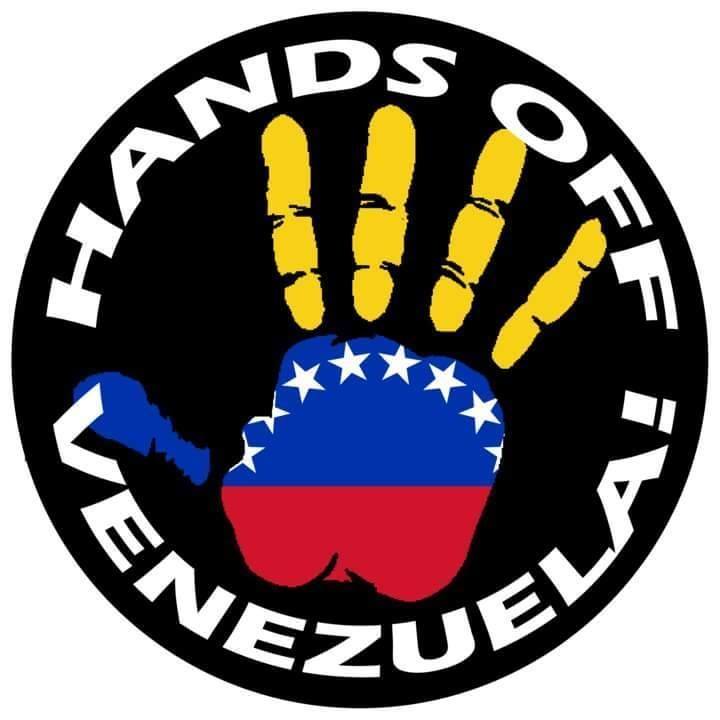
The government of Maduro in Venezuela continues to use the verbiage of socialism and the Bolivarian Revolution, but in fact it has become the opposite of everything President Chavez stood for. Hugo Chavez nationalised companies and expropriated the land. Maduro privatises and hands over land to the landowners.
Chavez encouraged workers’ control and factory occupations. Maduro destroyed workers’ control and jails trade union leaders who organise to defend trade union rights.
But we need to be clear. The reason Washington has launched an assault on Venezuela and its government has nothing to do with the democratic rights of workers and peasants. It is precisely the opposite.
They want to install a government that is fully compliant with the diktats of US imperialism, which cuts off links with China, Russia and Iran, and fully opens up the country’s natural resources to US multinationals for looting and pillaging.
The eventual coming to power of Nobel Peace Prize laureate María Corina Machado would not bring democracy and human rights.
Quite the contrary. In order to carry out the programme of attacks on the working class and the peasantry which she is committed to, a reactionary government led by the so-called ‘democratic opposition’ would have to use massive and brutal repression to crush the resistance of the working class.
We have been here before. The cycle of the Bolivarian Revolution can trace its roots back to the Caracazo uprising in February 1989. At that time, the government of Carlos Andrés Pérez (CAP) implemented a package of monetarist counter-reforms which led to a mass spontaneous uprising throughout the country.
The ‘democratic’ government of CAP used the army against the unarmed masses of workers and the poor, killing hundreds or possibly thousands.
The problems facing the Venezuelan workers and peasants will certainly not be solved by imperialist intervention, nor by the lackeys of US imperialism in the local oligarchy. They will be made much worse. The task of revolutionary communists is to oppose imperialist intervention.
Replacing one foreign master for another is not the way forward either.
In the last instance, the only way for the workers and peasants in Latin America to throw off the yoke of imperialism is by taking power into their own hands, expropriating both foreign and ‘national’ capitalists (in as much as they exist), and using the region’s vast wealth and resources to solve the urgent needs of the masses for bread, land, jobs, housing, education and healthcare.

